#portraits of icelandic people
Explore tagged Tumblr posts
Photo
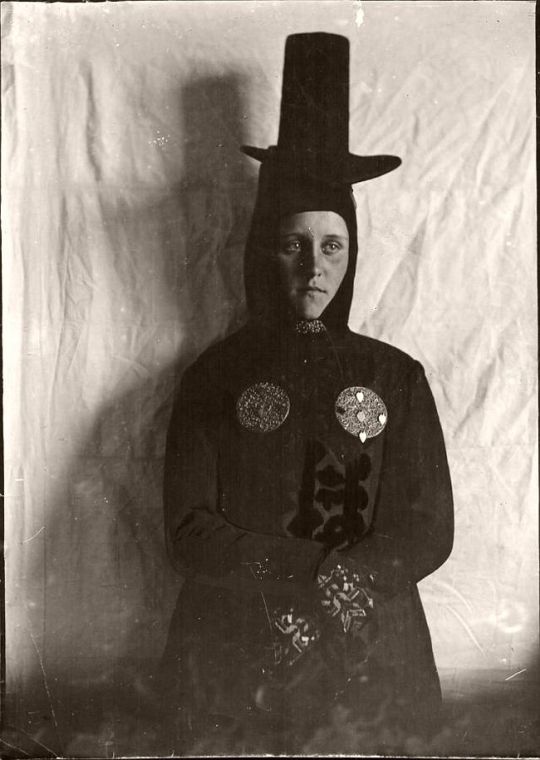
Portraits of Icelandic People by Daniel Bruun
The Danish National Museum has a large collection of photographs, many of which are available online. Since Iceland was a part of the Danish Kingdom until 1944, the museum contains a fascinating collection of old photographs taken in Iceland around the turn of the century 1900. Among these collections is the Daniel Bruun collection.
https://icelandmag.is/tags/danish-national-museum
#daniel bruun#portraits of icelandic people#photographic portraiture#portraits of women#icelandic#woman#women#1900s#daniel bruun collection
231 notes
·
View notes
Text
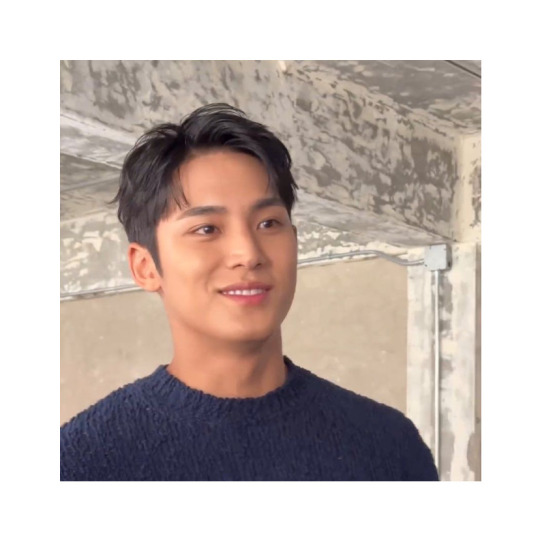
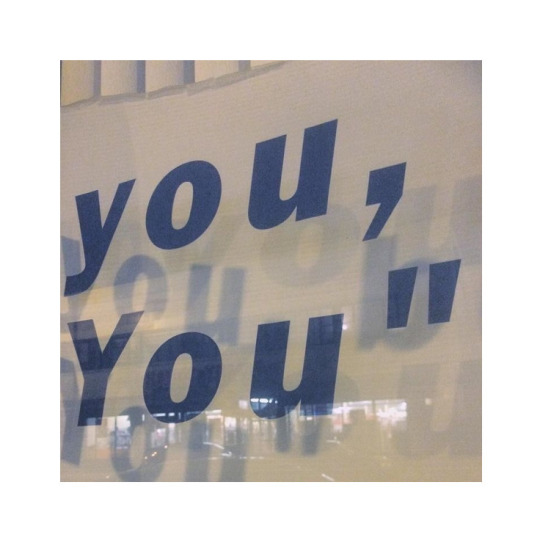
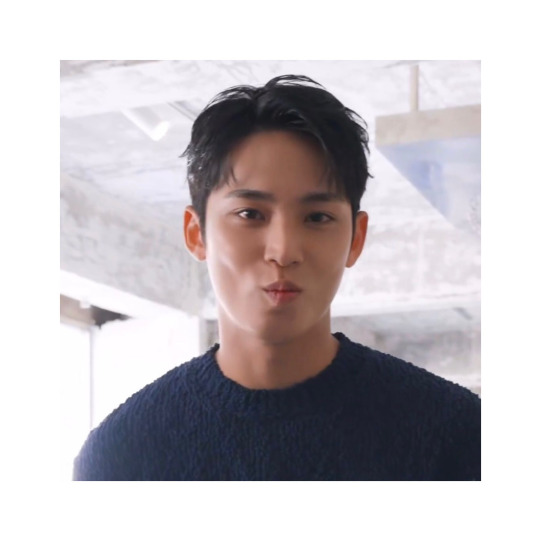
[ 💿 ] . . . TAPE 9
いつでも君のそばにいること / それが何より大切さ 君も / 僕の隣にいるなら完璧 ay ya ya / 広い like the sky
☁️ "24h" by seventeen
being loved by kim mingyu means having a small big teddy bear as a boyfriend. the fact that mingyu is quite clingy not only means that you always have someone to hug, kiss, or cuddle with - but also that he is your oasis who is able to ground you. his touch, whether it's a thumb brushing your cheek, strong arms around your shoulders, or just a hand on your thigh - mingyu is always able to convey so much emotion through a simple touch, as if he was silently telling you "i'm here, don't worry." besides, there is no place where you would feel safer than in his embrace - he is your home, your safe haven, your other half that makes you feel whole.
being loved by kim mingyu means having a travel buddy with whom you could travel the whole world with if you wished. apart from physical touch, mingyu thrives off quality time - he would spend all his time with you if he could, because what's better than spending time with the people you love? and combine it with his love of travelling and discovering new places? exploring the world with mingyu would be the most beautiful adventure of your life, because this boy has the power to turn every moment into a magical and unforgettable one. whether it would be sunny italy or ice-cold iceland, every place and every thing you did would be a memory that you would treasure for the rest of your life.
being loved by kim mingyu means having someone who will always be by your side to help you get up when you fall. he's always there for you when you need him, it doesn't even need to be mentioned, but while some people coward when they see their partner going through harder times and needing more support, mingyu would go through even the hardest part of your life with you. no matter how ugly it would get, how hard it would be for you to get up - mingyu is your pillar who would always stand by you.
being loved by kim mingyu feels like a warm home to which you come back after a hard day, like the smell of the sea, like hot chocolate on a rainy day, like a hug that you don't want to end.
“i’m yours for ever -- for ever and ever. here i stand; i’m as firm as a rock. if you’ll only trust me, how little you’ll be disappointed. be mine as i am yours.” - henry james, portrait of a lady
#seventeen#seventeen reactions#svt reactions#seventeen imagines#seventeen kpop#seventeen x you#seventeen x reader#seventeen carat#seventeen fluff#svt fluff#seventeen reaction#seventeen scenarios#mingyu fluff#mingyu imagines#mingyu scenarios#mingyu x reader#mingyu seventeen#kim mingyu#mingyu x you#mingyu x y/n#svt#mingyu#seventeen mingyu#svt kim mingyu#kim mingyu x reader
984 notes
·
View notes
Text

a small collection of rarely-seen portrait photos that shows Icelandic people from the late 19th and early 20th centuries. They were taken by Daniel Bruun (1856-1931), a member of the Danish Army, archaeologist and writer.
168 notes
·
View notes
Note
Im curious if FMC is a fae. Would she have wings like other fae depictions ???
Traditionally, faeries are depicted with a wide variety of features.
Accounts of their appearance greatly vary depending on the region the beliefs have come from.
Keep in mind Irish, Scandinavian, Nordic and Celtic folklore may have common roots but they are all very different.
And in some instances the word 'Fae' can be used interchangeably with the word 'Elf' and/or as an umbrella term used to refer to a group of species belonging to the same family (the same way tigers, lions, and house cats are all objectively different but are also all felines).
-> For example, there are The Huldufólk or The Hidden People who are a race of elves that originate from Icelandic/Faroese Folklore. They behave much like humans and bear a strong resemblance to us, but they are also noteworthy for their natural ability to make themselves invisible at will.
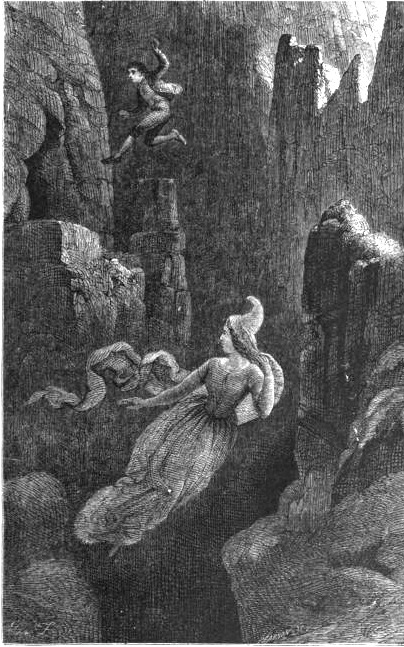
(Engraving of a man jumping after a female elf into a precipice.)
-> In traditional Norse Mythology, you have the Álfar. The Ljósálfar ("Light Elves") and the Dökkálfar ("Dark Elves") who are two contrasting types of elves; the dark elves dwell within the earth and have a dark complexion, while the light elves live in Álfheimr (Alfheim), and are "fairer than the sun to look at". They are both attested in the Prose Edda, written in the 13th century by Snorri Sturluson, and in the late Old Norse poem Hrafnagaldr Óðins.
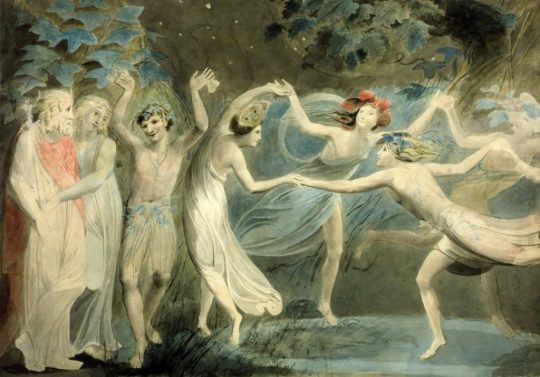
(“Oberon, Titania and Puck with Fairies Dancing” illustration by William Blake, c. 1786)
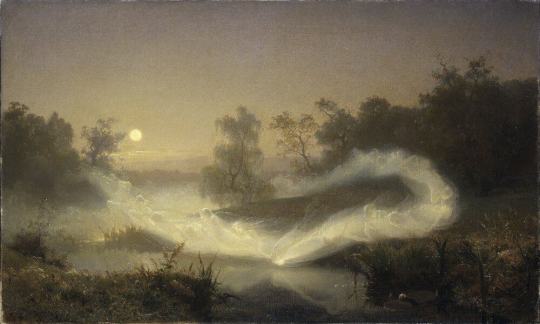
(“Älvalek” or “Elf Play” although the museum lists it as “Dancing Fairies” - oil painting by August Malmström 1866)
-> In Irish folklore, The Tuatha Dé Danann (meaning "the folk of the goddess Danu") are also known by their earlier name Tuath Dé ("tribe of the gods"), because in some beliefs the Fae are Demoted Pagan Deities. They are described as a supernatural race, much like idealized humans, who are immune from ageing and sickness, and bear the ability to wield magic. The powers most often attributed to the Tuath Dé are control over the weather and the elements, and the ability to shapeshift.
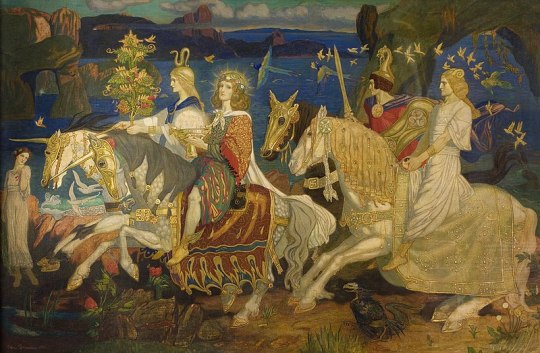
(The Tuatha Dé Danann as depicted in John Duncan's Riders of the Sidhe - 1911)
All in all, in folklore, faeries actually rarely have wings, but they are often depicted with them in Victorian and later artworks.
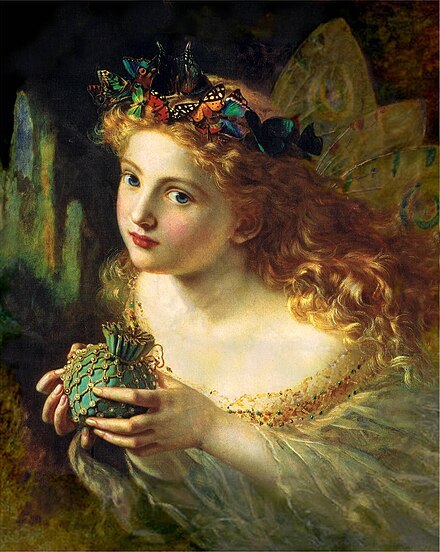
(A portrait of a fairy, by Sophie Gengembre Anderson - 1869. The title of the painting is Take the Fair Face of Woman, and Gently Suspending, With Butterflies, Flowers, and Jewels Attending, Thus Your Fairy is Made of Most Beautiful Things – from a verse by Charles Ede.)
What I've noticed is that, in the traditional sense, fairies often fly using magic, or by perching on the backs of birds, ragwort stems, or other mythological creatures like dragons or gryphons.
And some depictions are vague enough to attest a certain attribute (like wings) as a creative liberty to a faerie that, say 'lives in the sky'.
But does that mean the Fae in early folklore do not have wings at all?
Absolutely not.
You see, thus far, I've only listed depictions of the Fae that are most reminiscent of the 'traditional Elf'. But have you ever heard of Leprechauns... Banshees... Changelings...Pixies... Mermaids...
Sprites, Goblins, Gnomes?
The freaking Headless Horseman?
Because they're all also faeries.
There are also faerie animals. Heard of Kelpies, anyone?
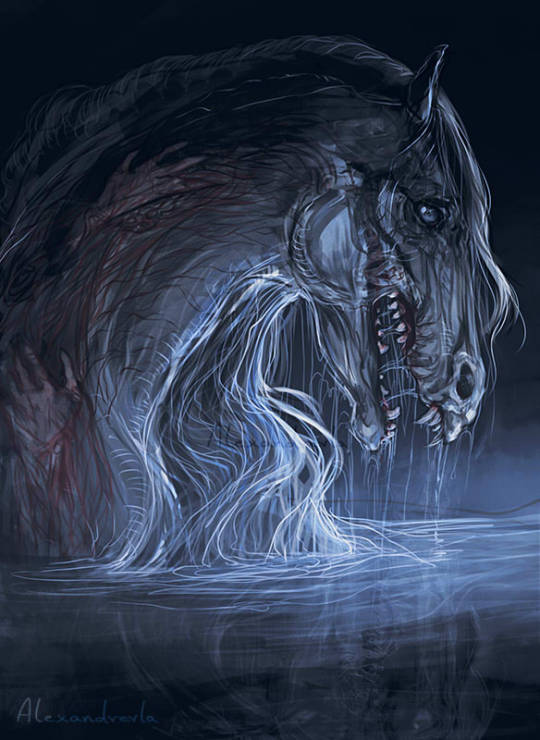
And quite frankly, it is not possible for me to summarize the scope, the depth and the richness of the cultures depicting these creatures with all of their variants. There are Eastern cultures, Western cultures, Indigenous cultures; I'm Bulgarian and my own culture has beliefs about faeries and Fae-like beings (the Slavs are a whole different ball game when it comes to that).
People dedicate their entire lives to become Folklorists and will still barely scratch the surface. All in all, there's just not one set of rules for the Fae, we can't amalgamize them into one thing, that's just not how it rolls.
So what can I say about my depiction of the Fae in Path of Alfheim?
Well... I have a ton of variety to play around with. 😁
My understanding is that the Fae all vary from each other depending on their lineage, their upbringing, their alignment, the territories and/or 'realms' that they inhabit. There are so many species out there that every shape and form you can possibly think of likely exists.
And besides the faeries that live on land, there are also lake folk, sea folk, mountain folk, valley folk, air folk, a specific corner of the room at night folk.
They can be spirits, ghosts, animals, monsters, elementals, demons, demoted angels, deities, human... It goes on.
Something that hugely inspired me, and what I think is a beautiful depiction of the Fae, happens to be the Disney Maleficent duology with Angelina Jolie as the main female lead. The production had Holly Black, a New York Times best-selling author of over thirty fantasy novels (The Cruel Prince being one of them) and a Faerie Folklorist, on set.
And, oh, would you look at that?

Maleficent has wings. 😉
So whether the FMC does as well is up to the interpretation.... for now.
Thank you for the Ask, Anon! ❤️
12 notes
·
View notes
Text
In occasionally ask my friends to send me single words to think about before bed so my thoughts can run wild a bit and I think I just wrote an essay on why people are worth saving in fifteen minutes.
“It’s weird to me how much paint connects people through time because of the pigments. Granted some pigments aren’t used anymore because they’re poisonous like arsenic or sulfuric derivatives or radioactive likes cobalts and uraniums. But many pigments such as the red from iron or the green from copper are the same pigments invented and pioneered by ages old painters. My self portrait used the same iron that a Scandinavian woman what feels like millions of years ago used to paint her baby a picture of her husbands hunting, the green I use to paints viola stems and stream is the same green that van goph used in his highlights and stilllifes. The indigo I used to paint a woman’s eye is the same indigo that would’ve been used to paint a flower for a wealthy persons commission of a family. Maybe me and some unknown painter three hundred years ago both painted tangled limbs in the sunset, maybe both of our tears thinned the paint on the pallet, did they twirl their brush in thinner too? Did they ignore the canvas? Leave it blank? Did they share my name? My face? Did they follow the same pattern drawing loving eyes first and working form there? Or did they focus on the anatomy, discussing with themselves. Did they have to repaint the hair because they had smeared the background paint. Did a German artist a hundred years ago paint the same forest cat, did he name it? Did it mean little rascal in his language too? Did a woman in England dream of a sea she has never seen? Were the shells painted with the same daisy yellow and rust red or did she dream of different ones. Spirals instead of points, smooth instead of textured? Did she laugh at the brush bristles being permanently pink from yesterday’s carnations? Maybe a man in Russia painted a similar skyline, maybe an Icelandic man painted the same northern lights. They might’ve meant more to him, maybe less. Every new paint that comes out we pioneer, my crappy imagination could turn out the most influential thing of the next century. Perhaps we’re all connected through art. Not just the pigments but the act. Mediveal children drew in the margins of books, graffiti is on the walls of Pompeii, woodcarvings are found in remnants of churches in Denmark, the cuts imprecise and erratic as though an apprentice forgot his post, there are cave paintings that shows the painters hand the size of a four year olds’ likely guided by their father or mother. Humans create. In depths of war and famine we create. We create when we are happy when we are sad the angriest people create the most beautiful pieces because you can see the shaking hand holding the brush you can feel warm breath fanning on the canvas, tears thin paint to create washes and drips, smiles reflect light onto the painted rivers and ice. Paint connects every human who has ever lived and every human who ever will. Art goes beyond religeon, race, ethnicity, food, ideas, language poem written in German evoke emotional responses for me when I do not know the language. Art has no structure and yet we are all fluent and it is truely remarkable.”
How beautiful the cry of the soul slashed open
9 notes
·
View notes
Text












Icelander Ragnar Axelsson, one of the North’s most in-demand photographers, has long been observing climate change with the greatest concern. For more than 40 years, he has been documenting the dramatic changes to landscapes and habitats on the margins of the inhabitable world, travelling to the most remote and isolated regions of the Arctic, to Inuit hunters in Northern Canada and Greenland, to farmers and fishermen on Iceland and the Faroe Islands, and to the Indigenous population in Northern Scandinavia and Siberia.
His information comes first-hand from the people on the ground. Axelsson will go to great lengths to be able to visit them over and over and spend time with them. For this reason, and because he shares their often arduous everyday life, he enjoys their trust. That, in turn, allows him to freeze moments in photographs of their lives and write up their narratives — thus, he becomes the ambassador to their existence and their changing living condi- tions. The other major topic that thrills Axelsson is the force of the elements and the grandeur of Nordic nature. His impressive photographic landscape portraits are testimony to this.
****
Some pics from his reportage book "Andlit Nordursins - The Face of The North" published in 2016.
23 notes
·
View notes
Text

Kirsten Kjær (Nov. 14, 1893 - 1985) was a delightful, autodidact Danish painter, who since 1981 has had her own museum in the small town of Frøstrup. She traveled extensively - often to hot-spots of conflict and controversy - including Liberia, USA, Iceland and post-WWII Poland…
She also tried out her hand at writing and acting, but mainly hung out in Bohemian circles in Denmark and abroad, doing portraits of the interesting people she met, such actors and actresses.
Above: Portrait of Peter Malberg, 1932 (Kirsten Kjær Museum)
#art#danish painter#danish artist#portrait painting#kirsten kjær#peter malberg#kirsten kjær museum#frøstrup#1930s#oil on canvas
5 notes
·
View notes
Text
Map: Exploring the World by Victoria Clarke
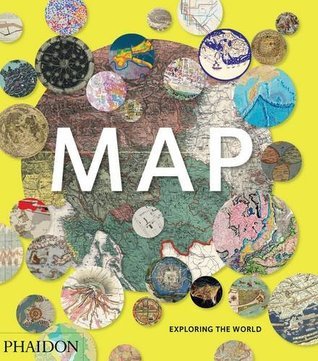
Read time: 2 Days Rating: 4/5 Stars
The Quote: There are many different kinds of map. Part science, part artistic design, the map as a concept is complex and ever changing, encompassing a range of different forms of graphic expression and display. — John Hessler
Most of this review will just be a list of my favourite maps or notable inclusions and some interesting quotes. Honestly, this is a hard book to review purely because it is what it says on the tin, a collection of maps. Let's all be very honest here Map is a book for a particular kind of person. There are a number of fields that may find it of interest but for most people, it is just something that would not appeal. Some groups of people I think this might appeal to, the obvious is those with an amateur interest in cartography (ie the intended audience), those with an interest in anthropology, potentially art fans, or those looking to fill a reading prompt. It is an appealing coffee table book though, there are some really nice and unusual pairs of illustrations that you are likely to find anywhere else. Of the categories I listed I'm actually the anthropology (though I am using it for a prompt too).
To give you an idea of the layout of the book. For the most part, the maps are presented in sets of two. Each set is tied by having a similar topic, style or theme, though very few have similar colour themes. In most cases, the maps were created decades or longer apart. Each map is captioned by the title, year of creation and artist/ cartographer on one line. The second line has the materials it's made of and on, its dimensions and where it is currently housed. Under this is an approximately 200-word write-up on the map, its importance and the creator. I was reading this at night and found it to be quite like watching a match of tennis or test cricket (sometimes at least). Just one more game, just one more over or in this case just one more page. I found it to be quite a calming read. That said there are quite a lot of random facts I didn't know. Like where Brazil got its name from, a tree.
From here the review just devolves into a list of maps and quotes.
Olafur Eliasson's real-time neon light Daylight Map is the first one that made me this I have to mention this
City of Anarchy by Adolfo Arranz is a brilliant cutaway of Kowloon Walled City in Hong Kong
1247s A Map of the Stars by Wang Zhiyuan is stunning
Survival Map 1992-1996 (The Siege of Sarajevo) is such a dichotomy. It is a brightly coloured beautiful thing for a very dark time in human history.
Willamette River, Oregon by Daniel Coe is a gorgeous map and the colouring is fantastic.
Map of Days is a wonderful idea for a self-portrait by Grayson Perry.
Mapping the Brain by the Human Genome Project is a whole other way to present the human brain and I want it on my wall
The embossed Map of Maine is gorgeous and I want to such it.
The interactive Iceland Illustrated is a fantastic
In 1989 the-then American Cartographic Association recommended that rectangular projections should not be used at all for general-purpose world maps, but Peters' contention that we should scrutinize the way we predict the world remains valid. (p.156)
I have never seen the Upside Down World Map and I live in Australia.
I really like A Map of Vesuvius. It is a good way to show the impact of a lava flow.
“Few rulers have had as much reason to fear their enemies as King Henry VIII" — (p.176) Truer words have never been spoken.
Carta Marina is so stunningly detailed. I wish I could see it in all its in-person glory
Chicago, USA is just a smart piece of design work
Any given place holds an infinite number of things that can be mapped. An individual neighbourhood has streets and houses and parks - all of which we might expect to see on a map. But it also has power lines and Christmas lights and sounds and graffiti and people with their own aspirations and all this can be shown cartographically if we simply take the time to collect the information." — (p. 193)
This isn't the first map I've seen of Mecca but it is probably my favourite, its the colouring
Serio-Comic War Map for the Year 1877 by Frederick W. Rose is humorous.
"named Bom Bahia (good bay) by the Portuguese, Bombay was ceded by Portugal to Englan as part of Catherine of Braganza's dowry when she married Charles II of England in 1661" — (p.226) How did I not know this? I mean I'm not surprised it was all to do with marriage and dowries but I didn't know
Locals and Tourists by Eric Fischer is a wonderful project idea. I'd love to see it done in other cities. Also, I like the colour choices.
The Earth Seen Through the Sphere of the Stars by Andreas Cellarius is so pretty and so intricate it looks like it belongs on a ceiling somewhere.
2MASS Redshift Survey by John Hurchra, Thomas Jarrett and others I also want on my wall. It's mapping light wavelengths look it's pretty ok.
The Court Game of Geography c. 1840-3 by W. & H. Rock is a fantastic deck of cards and I want it. I would love to see the whole deck, the book only has one suit (hearts, Europe). Honestly, I think we could use this again now.
2 notes
·
View notes
Text
Cold, Remote and Short of Women: A Portrait of Life on the Faroe Islands
— March 23, 2023 | By Oscar Holland

Aadne and Jóannes, 51-year-old twin brothers in the Faroe Islands, which has 107 men for every 100 women. "I pray to God that I will find a wife," Jóannes told photographer Andrea Gjestvang. "But maybe he doesn't hear me."Scroll through the gallery to see more images from Gjestvang's book "Atlantic Cowboy." Andrea Gjestvang/GOST Books
In her striking images of the Faroe Islands, a remote archipelago between Iceland and her native Norway, photographer Andrea Gjestvang depicts islanders and livelihoods that are as tough and unforgiving as the windswept landscape.
Fishing trawlers travel through frigid seas. Clouds roll over craggy mountains and cliffside villages. Clothes and boots are stained with the blood of slaughtered livestock and marine animals. Well-used tools hang from the walls of traditional wooden buildings.
The innate connection between Faroese people and their surroundings is woven through Gjestvang's new book about the islands, "Atlantic Cowboy." Portraits appear alongside dramatic landscape shots that reiterate the Faroes' harsh conditions and remoteness of settlements dwarfed by neighboring mountains.
"I'm not a landscape photographer but, just like when I portray people, when I photograph a landscape, I look for mood," Gjestvang said during a video interview. "I try to think about the landscape as also kind of a portrait, or something that express feelings, somehow."
Gjestvang's photos also reveal another challenging aspect of life in the Faroes, which may have been first inhabited by Irish monks in the 6th century: Her subjects are almost exclusively male.
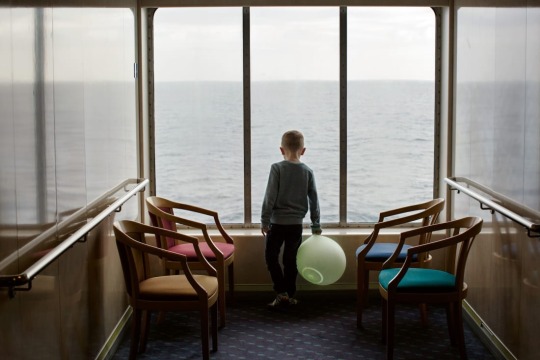
A young boy on a ferry traveling from the Faroe Islands' capital, Tórshavn, to the archipelago's southernmost island, Suduroy. Andrea Gjestvang/GOST Books
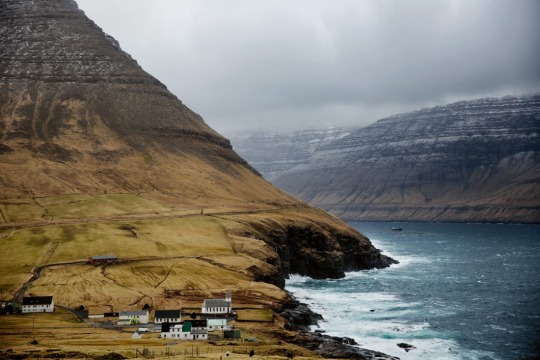
Gjestvang also captured the rugged geography of the Faroe Islands. "When I photograph a landscape, I look for mood," she said. "I try to think about the landscape as also kind of a portrait, or something that expresses feelings, somehow." Andrea Gjestvang/GOST Books
Though much of the Faroese economy revolves around physically demanding jobs traditionally taken by men — the islands' fishing industry alone employs 15% of the workforce. Visiting several times annually over the course of six years, Gjestvang trained her lens on the lives and communities of the islands' unmarried men. They are shown plucking seabirds' feathers, tending to goats or hauling the carcasses of a slaughtered pilot whales to shore. (Whale meat was once an important part of the Faroese diet, though the nation's controversial whale and dolphin hunts now spark global outrage.)
Young women, meanwhile, often choose to study or work in Copenhagen (the Faroe Islands are part of the Kingdom of Denmark) or elsewhere in Europe. Many never return, Gjestvang learned. According to World Bank data, just 48.2% of the self-governing nation's population in 2021 was female, putting it among the most gender-imbalanced places in Europe. This equates to over 107 men for every 100 women, or a deficit of roughly 2,000 females.

Faroe Islander Fróði rests on the carcass of a pilot whale after a "grindadráp," or whale hunt, a controversial tradition that often sparks global outrage. Andrea Gjestvang/GOST Books

Rogni and Odin, aged 26 and 25 respectively, are among only a handful of people living in Mykines, the Faroes' westernmost island. Andrea Gjestvang/GOST Books
This number may not seem huge, but with the 17 inhabited islands only home to around 53,000 people — and the gender gap more pronounced among younger adults — it poses significant societal implications. Faroese Prime Minister Aksel V. Johannesen said "skewed gender demographics" were among his government's "greatest challenges" upon first taking office in 2015.
For Gjestvang, this dynamic offered an "an interesting opportunity to do a project on men," she said. "As a female photographer, I get commissioned a lot to do women's health stories, and women's issues — which are very important — but I was curious to turn my camera in a different direction."
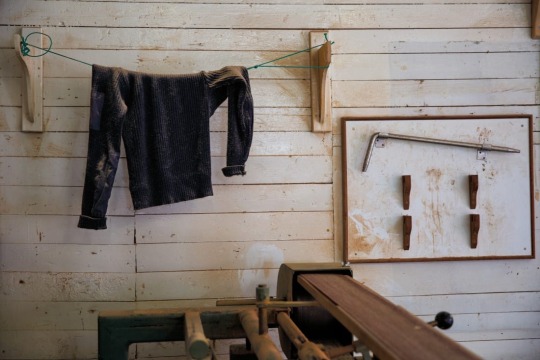
A carpentry workshop in the capital Tórshavn. Andrea Gjestvang/GOST Books

Faroe Islander Hjalmar is pictured while slaughtering sheep on a farm in the village of Kaldbaksbotnur. Andrea Gjestvang/GOST Books
Evolving Masculinity
Economic prospects for Faroese women now look rosier than in the 1990s, when thousands of people left the amid an economic collapse caused, in part, by shrinking fish stocks. Boosted by a growing tourism and service sectors, the GDP per capita has tripled since 2000 and is now on par with that of the United States.
The nation's government has in recent years invested in gender equality and employment initiatives in the hope of making the islands more appealing to women. "They have tried to make it slightly easier to be a single mother," Gjestvang added, citing expanded offerings at the capital's university and increased acceptance of remote working due to the Covid-19 pandemic.
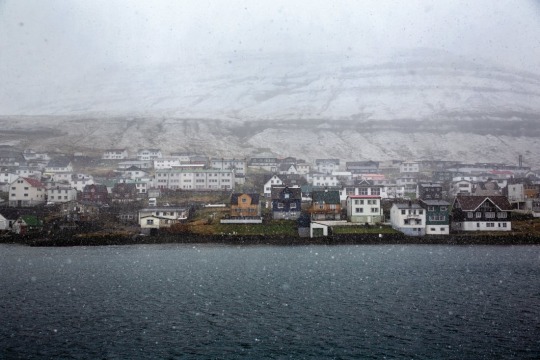
The Faroe Islands' second-largest town, Klaksvík. Andrea Gjestvang/GOST Books
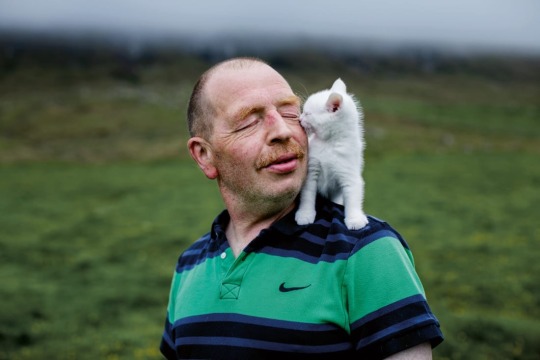
One of Gjestvang's subjects, 54-year-old Andrias, is pictured with his kitten outside his home in Vidareidi. He studied in Denmark before returning to the Faroe Islands and buying a boat. Andrea Gjestvang/GOST Books
The photographer said the lack of women was not evident in the Faroese capital, Tórshavn, though it became "quite visible" when traveling to smaller villages. The social lives of these coastal communities often revolve around harbors, and she spent time visiting the informal meeting places where men "hang out, have beers and talk."
But Gjestvang's sensitive portraits also offer a candid snapshot of men in their own homes. Several are captured sitting or lying alone on sofas, while others are pictured with pets or female relatives. In accompanying interviews, some of which in her book, her subjects opened up about the realities of life in a male-dominated society. "I pray to God that I will find a wife," one unmarried man told her. "But maybe he doesn't hear me."
The photographer believes, however, that most of the men she documented were not lonely — thanks, in part, to the close-knit nature of Faroese families. As one 40-year-old told her: "Strong family ties become a substitute. I already have a family myself, even though I don't have a wife and children. When you have an extended, close-knit family, you have the freedom to be yourself and find peace with that."
"One man I interviewed told me that the Faroe Islands is the perfect playground for men," the photographer added, explaining her book's title. ("Atlantic Cowboy" is a term borrowed from a 1997 book of the same name and later used by Firouz Gaini, a professor of anthropology at the University of the Faroe Islands who has studied the nation's gender dynamics and wrote a foreword for Gjestvang.)
"It's a place where you can and fish and be outdoors and the freedom is endless, somehow," Gjestvang said.
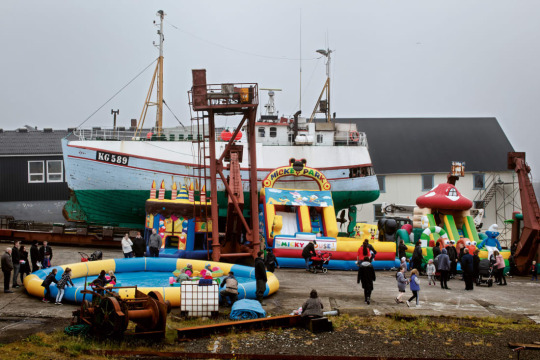
A temporary amusement park in the town of Vágur. Andrea Gjestvang/Andrea Gjestvang
Decades of lop-sided demographics have meanwhile contributed to a national identity that continues to celebrate virtues of strength and fortitude, the photographer added.
"To be strong, and to provide for yourself and your family has been an important value," she said. "The idea of the strong man is very present, and you can see it ... This kind of masculinity has gained a lot of respect, and has been sought-after.
"I think this has, of course, affected society, even though I will say that Faroese women are also very strong — they are tough, too."
2 notes
·
View notes
Text
On this day in Wikipedia: Monday, 21st August
Welcome, Willkommen, Välkommen, Bienvenida 🤗 What does @Wikipedia say about 21st August through the years 🏛️📜🗓️?

21st August 2019 🗓️ : Death - Celso Piña Celso Piña, Mexican singer, composer, arranger, and accordionist (b. 1953) "Celso Piña Arvizu (April 6, 1953 – August 21, 2019) was a Mexican singer, composer and accordionist, mainly in the genre of cumbia, being one of the most important musicians in the style of "cumbia rebajada". Piña was a pioneer in the mixture and fusion of tropical sounds with many of his works..."

Image licensed under CC BY-SA 2.0? by Secretaría de Cultura Ciudad de México from México
21st August 2018 🗓️ : Death - Stefán Karl Stefánsson Stefán Karl Stefánsson, Icelandic actor and singer (b. 1975) "Stefán Karl Stefánsson ( STEF-ən STEF-ən-sən, Icelandic: [ˈstɛːfaun ˈkʰartl̥ ˈstɛːfaunsɔn]; 10 July 1975 – 21 August 2018) was an Icelandic actor and singer. He was best known for portraying Robbie Rotten, the antagonist of the children's television series LazyTown...."
21st August 2013 🗓️ : Event - Syrian civil war Syrian civil war: Areas controlled by the Syrian opposition in Ghouta, Damascus, were attacked by rockets (launcher pictured) containing sarin, killing at least 281 people. "The Syrian civil war (Arabic: ٱلْحَرْبُ ٱلْأَهْلِيَّةُ ٱلسُّورِيَّةُ, romanized: al-ḥarb al-ʾahlīyah al-sūrīyah) is an ongoing multi-sided civil war in Syria fought between the Syrian Arab Republic led by Syrian president Bashar al-Assad (supported by domestic and foreign allies) and various..."

Image by Mahmoud Bali (VOA)
21st August 1973 🗓️ : Birth - Sergey Brin Sergey Brin, Russian-American computer scientist and businessman, co-founded Google "Sergey Mikhailovich Brin (Russian: Серг��й Михайлович Брин; born August 21, 1973) is an American billionaire business magnate best known for co-founding Google with Larry Page. Brin was the president of Google's parent company, Alphabet Inc., until stepping down from the role on December 3, 2019. He..."

Image licensed under CC BY 2.0? by Steve Jurvetson
21st August 1923 🗓️ : Birth - Keith Allen (ice hockey) Keith Allen, Canadian-American ice hockey player, coach, and manager (d. 2014) "Courtney Keith "Bingo" Allen (August 21, 1923 – February 4, 2014) was a Canadian professional ice hockey defenceman and National Hockey League (NHL) head coach and general manager. He played 28 games in the NHL for the Detroit Red Wings during the 1953–54 and 1954–55 seasons. The rest of his career,..."

Image by Unknown authorUnknown author
21st August 1823 🗓️ : Birth - Nathaniel Everett Green Nathaniel Everett Green, English painter and astronomer (d. 1899) "Nathaniel Everett Green FRAS (21 August 1823 – 10 November 1899) was an English painter, art teacher and astronomer. He professionally painted landscapes and portraits, and also gained fame with his drawings of planets. Born in Bristol, the son of Benjamin Holder Green (1793–1865), then a..."

Image by Nathaniel Everett Green
21st August 🗓️ : Holiday - Youth Day (Morocco) "National Youth Day is a holiday dedicated to the youths of a country. It is observed by 18 countries, on many dates throughout the year. The United Nations agreed on the date of 12 August in 1999 in South Africa...."

Image licensed under CC BY-SA 3.0? by
This picture has been taken by Andrew Butko. Contact e-mail: [email protected]. Do not copy this image illegally by ignoring the terms of the СС-BY-SA or GNU FDL licenses, as it is not in the public domain. Other photos see here.
0 notes
Text
Tiff J. Sutton
Tiff J Sutton is a photographer and video artist based in St. Louis. Her portraits of herself and others capture the intimacy present in Blackness. Much of Sutton's work explores Black people in the surrounding environment, either outside in nature or inside her home. These contemplations raise questions about what it means to be Black. Black Ice is a series of self-portraits Tiff took while in residency in Iceland. Her search for Black models was futile and ultimately resulted in Tiff modeling for the series. Her various stances outside insert her into a landscape devoid of Black bodies. In her reinsertion, she legitimizes her freedom to exist in this hostile, at times lonely world In this sojourn Sutton searches for home, she searches for and ultimately finds herself. Her photographs feature a unique distortion that fractures her models into multiples. The ruptures contain the little universes that exist in all of us. The past and its domination but also the future and its possibilities live in each small fissure.
Evident in her work is a desire to center the interiority and intimacy that is Blackness. Not only does she explore the positionality of Blackness in opposition to Whiteness, but the (non) fluidity of Blackness itself. The nuances of existing as a Black person are numerous. (It is outside the purview of this article to explore them, but if you Reader needs some insight, then you got some work to do.) One of the main through line in our conversation was relationships -- relationships to self and to others. Sutton's candidness with her work reinforced for me that contemporary artists are always thinking and rethinking their work. And that it is often related to personal revelations.
Video was one of her early entry points into creative work. Unfortunately, that did not work at the moment and Sutton turned to photography. It is hard to ignore your passions for long, and video has made it back into her work. Some of her new work involves a still sitter and an out-of-view narrator. Sutton is still playing with who that narrator might be and what they are speaking about. These explorations into re-incorporating video into her practice present an intimate view into an artist who frequently returns to the crossroads of practice. Sutton is constantly experimenting with new styles and mediums creating work that mirrors her exploration for truth(s). People are constantly in flux and learning new things. Shouldn't our work equally as such, reflect the tides of life?
Woven throughout our conversation on her work, we also talked about what it means to be a Black creative. There can be a lot of pressure to conform (or to reject) constructed ideas of Blackness and its relation to self. Blackness is expansive, a friend of mine once said. Within that expanse of Blackness is an expanse of humanity. There are endless ways to navigate that experience. Within the confines of Blackness, there exist contradictions. How does navigate the weight of identity that is thrust upon you? How does that experience affect (or not) one's work? Is that even a question we should be asking at this point. Is work by a Black photographer, depicting Black bodies, always commentary to broader exclusions? A possible direction Sutton is exploring is post-Blackness. Moving from creating work for a (potential) Black audience and instead focusing all energy into building work that does not only speak to the experience of the Black woman but speaks more broadly for a desire to exist in a world in a way that grounds humanity first and foremost.
Creation is the space where ingenuity, discipline, and curiosity meet. And that is the space Tiff Sutton resides.
0 notes
Photo

So blond, so happy - Mjóifjörður, 2020
#picoftheday#photooftheday#travel#iceland#original photographers#photographers on tumblr#street portrait#family portrait#blond people#too happy#streetphoto color
6 notes
·
View notes
Photo



Girls and mountains.
[Photographer: Daniel Ernst]
#photography#mountains#hiking#alps#wanderlust#switzerland#iceland#scandinavia#portrait#i love his pics#how people are always so small#really makes you pause and wonder
31 notes
·
View notes
Video
Icelandic horses by My Planet Experience Via Flickr: Young Icelandic horse with adults near Eyrarbakki, Iceland The Icelandic horse is a breed of horse developed in Iceland. Although the horses are small, at times pony-sized, most registries for the Icelandic refer to it as a horse. Icelandic horses are long-lived and hardy. In their native country they have few diseases; Icelandic law prevents horses from being imported into the country and exported animals are not allowed to return. © www.myplanetexperience.com
#Horse#Icelandic#Young#Foal#Animal#Nature#Natural#No people#Day#Portrait#Outdoors#Meadow#Field#Grass#Iceland#IS#my planet experience#www.myplanetexperience.com
28 notes
·
View notes
Photo
After reading The Powers of Darkness, the Icelandic version of Dracula, I *cannot* look at portraits like this and not think of the scene in the Gallery of Portraits where Dracula implies (or literally says) that he has fucked half the portraited people there, including cousins.
I swear, any portrait like this is the fucking Countess and brings back Dracula memories to me. Why did that woman had to wear white dresses and most of her tits out all the time and why did I read it with my own two eyes?

Portrait of Mrs. Williams
John Hoppner, 1790
61 notes
·
View notes
